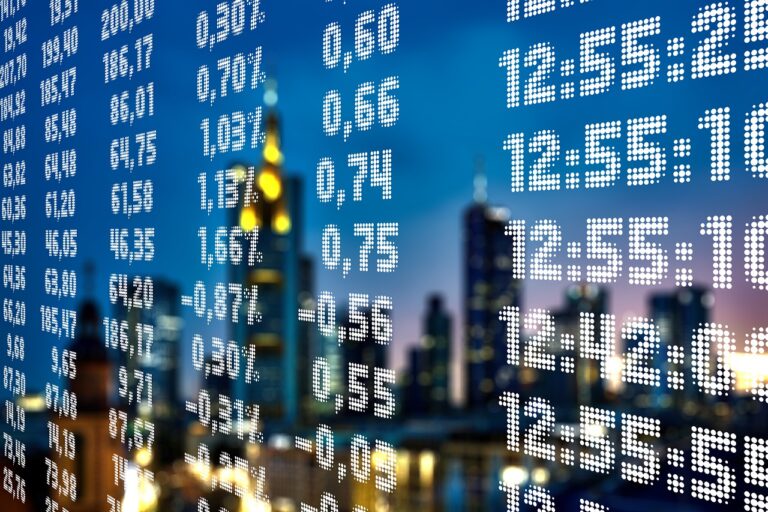When we talk about stock market indices, we are referring to baskets of stocks composed of varying quantities of equities.
They range from indices that contain hundreds of stocks to others that contain a few dozen. There are also indices that collect securities from a specific sector and others that are generalist.
The performance of an index, the one you follow on a daily basis, indicates the average performance of the securities included in the basket. However, this is not a mathematical average. But a weighted one in which securities with a higher capitalisation or price also have a higher weight.
There are many stock market indices in the world today. Here are the main ones.
Table of Contents
European Stock Exchanges
In Europe, the main stock market indices are the DAX30 for Germany, which contains the 30 largest capitalisation stocks on the Frankfurt Stock Exchange.
The CAC40 for France, which includes the 40 largest capitalisation French or foreign stocks listed on the Paris branch of Euronext.
The IBEX35 for Spain, which measures the performance of the top 35 stocks in terms of liquidity and capitalisation listed on the 4 main Spanish markets.
Lastly, the FTSE-100 for the UK, consisting of the 100 largest companies listed on the London Stock Exchange.
Stock market indices in the United States
Turning to the United States, on the New York Stock Exchange (NYSE) the best known stock indices are the Dow Jones, the NASDAQ and the S&P 500.
The Dow Jones index
The Dow Jones includes the 30 largest stocks listed on the US market. It is a price-weighted index, i.e. the weighting factor is given by the price of the stocks that make up the index.
It is not tied to any specific sector, but includes securities from both traditional and new economy sectors. The decision to include or exclude securities from the basket rests with the editors of The Wall Street Journal, but generally changes in the index’s composition are rare.
The NASDAQ index
The NASDAQ (an acronym that stands for National Association of Securities Dealers Automated Quotation), on the other hand, is the index of the major technology stocks on the American Stock Exchange, the first example of a fully electronic stock index.
The performance is in turn measured by several indices, mainly the NASDAQ Composite Index and the NASDAQ-100. The NASDAQ Composite Index includes more than 3,000 stocks. The better known NASDAQ-100, on the other hand, includes the largest 100 non-financial companies listed on the NASDAQ. It is a market capitalisation index, and does not include financial companies, and includes some foreign companies.
The S&P 500 index
The Standard & Poor’s 500 is the most important North American stock index. Although historically the Dow Jones index came first, this basket has become more important to investors over time.
The S&P 500 includes the shares of the 500 largest companies traded on the New York Stock Exchange (NYSE), the American Stock Exchange (AMEX) and the NASDAQ. They are selected by a special committee. The companies have a weighting directly proportional to market value.
All stocks represent US companies with a market capitalisation of more than $6.1 billion, a free float of at least 50 per cent, a monthly trading volume over the past six months of not less than 250,000 shares, and an average annual share value of more than $1.0, with a balance sheet profit in the previous four quarters. Although most of these stocks relate to US companies, foreign companies may also obtain admission.
Stock indices in Asia
The NIKKEI contains the 225 stocks of the largest 225 companies listed on the Tokyo Stock Exchange (TSE). The index is calculated daily by the Nihon Keizai Shinbun newspaper.
The HANG SENG INDEX (HSI) contains the top 50 companies on the Hong Kong Stock Exchange.
In China, on the other hand, the SSE Composite index includes all stocks traded on the Shanghai Stock Exchange. This includes stocks of Chinese companies traded in US dollars.
Another very significant index is the CSI 300, consisting of 300 type A stocks. I.e. stocks of Chinese companies available to local Chinese investors and foreign traders who have managed to obtain Qualified Foreign Institutional Investors status from the Beijing government with the largest capitalisation. They are listed on both the Shanghai and Shenzhen stock exchanges.
Read also: Stock exchange, what is it and how it works in 10 easy points












